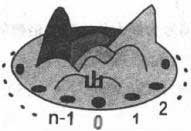[ACM - 数论]Wolf and Rabbit
Problem Description
There is a hill with n holes around. The holes are signed from 0 to n-1.

A rabbit must hide in one of the holes. A wolf searches the rabbit in anticlockwise order. The first hole he get into is the one signed with 0. Then he will get into the hole every m holes. For example, m=2 and n=6, the wolf will get into the holes which are signed 0,2,4,0. If the rabbit hides in the hole which signed 1,3 or 5, she will survive. So we call these holes the safe holes.

A rabbit must hide in one of the holes. A wolf searches the rabbit in anticlockwise order. The first hole he get into is the one signed with 0. Then he will get into the hole every m holes. For example, m=2 and n=6, the wolf will get into the holes which are signed 0,2,4,0. If the rabbit hides in the hole which signed 1,3 or 5, she will survive. So we call these holes the safe holes.
Input
The input starts with a positive integer P which indicates the number of test cases. Then on the following P lines,each line consists 2 positive integer m and n(0<m,n<2147483648).
Output
For each input m n, if safe holes exist, you should output "YES", else output "NO" in a single line.
Sample Input
2 1 2 2 2
Sample Output
NO YES
Author
Source
杭州电子科技大学第三届程序设计大赛
解题思路:
本题的本质问题是判断两个数m,n是否互质(除了1,没有其它公约数),如果互质,safe hole不存在(即所有的洞狼都能找一遍),如果不互质,safe hole 则存在。m=3 n=8 和 m=2 n=8为首先按照以下编号
0 1 2 3 4 5 6 7
8 9 10 11 12 13 14 15
n=7 m=2 n=7 m=3
0 1 2 3 4 5 6
7 8 9 10 11 12 13
当编号对n取余既有奇数又有偶数时,狼可以把所有的洞访问一遍,当编号n对n取余都是奇数或都是偶数时,狼有些洞访问不到。
代码:
#include <iostream>
using namespace std;
int gcd(int m,int n)
{
return n==0?m:gcd(n,m%n);
}//最大公约数
int main()
{
int t,ti;
cin>>t;
int m,n;
for(ti=1;ti<=t;ti++)
{
cin>>m>>n;
if(gcd(m,n)==1)//互质
cout<<"NO"<<endl;
else
cout<<"YES"<<endl;
}
return 0;
}
运行截图:



